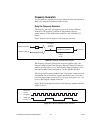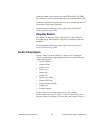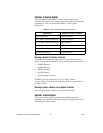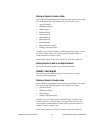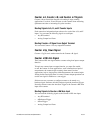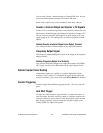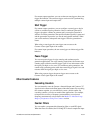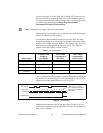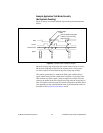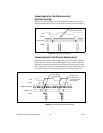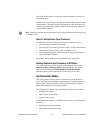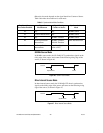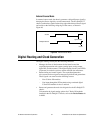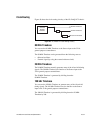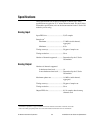
NI cDAQ-9172 User Guide and Specifications 62 ni.com
Prescaling
Prescaling allows the counter to count a signal that is faster than the
maximum timebase of the counter. The NI cDAQ-9172 chassis offers 8X
and 2X prescaling on each counter (prescaling can be disabled). Each
prescaler consists of a small, simple counter that counts to eight (or two)
and rolls over. This counter can run faster than the larger counters, which
simply count the rollovers of this smaller counter. Thus, the prescaler acts
as a frequency divider on the Source and puts out a frequency that is
one-eighth (or one-half) of what it is accepting.
Figure 42. Prescaling
Prescaling is intended for frequency measurement where the measurement
is made on a continuous, repetitive signal. The prescaling counter cannot
be read; therefore, you cannot determine how many edges have occurred
since the previous rollover. You can use prescaling for event counting
provided it is acceptable to have an error of up to seven (or one). You can
use prescaling when the counter Source is an external signal. Prescaling
is not available if the counter Source is one of the internal timebases
(80MHzTimebase, 20MHzTimebase, or 100kHzTimebase).
Duplicate Count Prevention
Duplicate count prevention (or synchronous counting mode) ensures that a
counter returns correct data in applications that use a slow or non-periodic
external source. Duplicate count prevention applies only to buffered
counter applications such as measuring frequency or period. In such
buffered applications, the counter stores the number of times an external
Source pulses between rising edges on the Gate signal.
External Signal
Counter Value
Prescaler Rollover
(Used as Source
by Counter)
01



